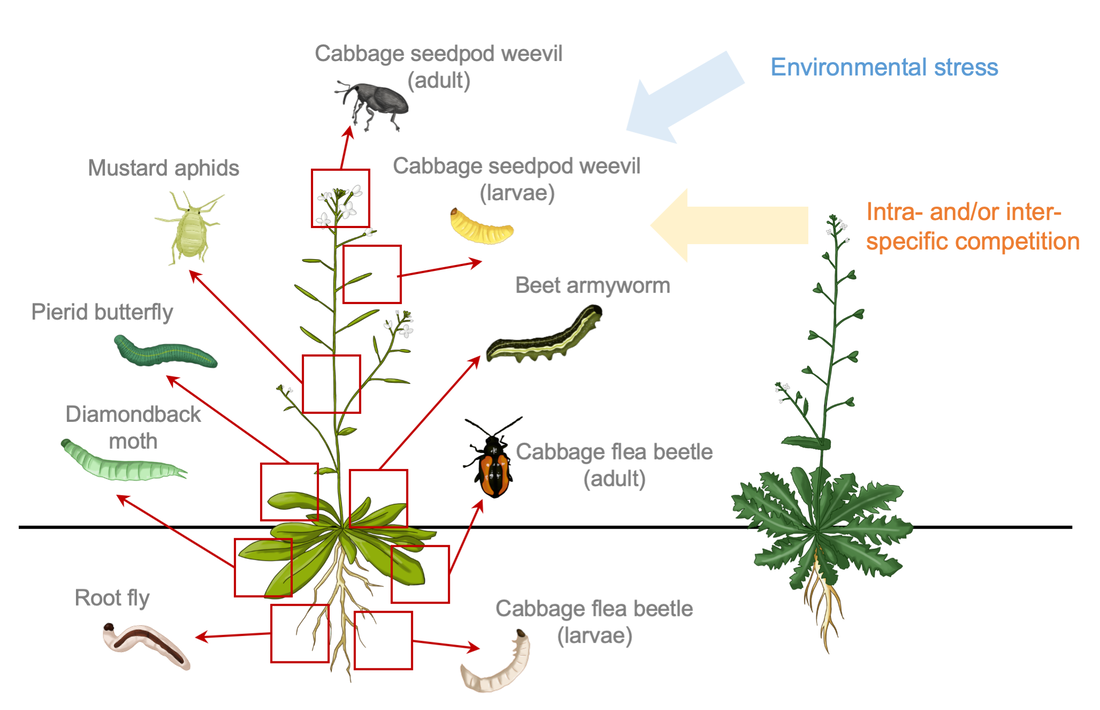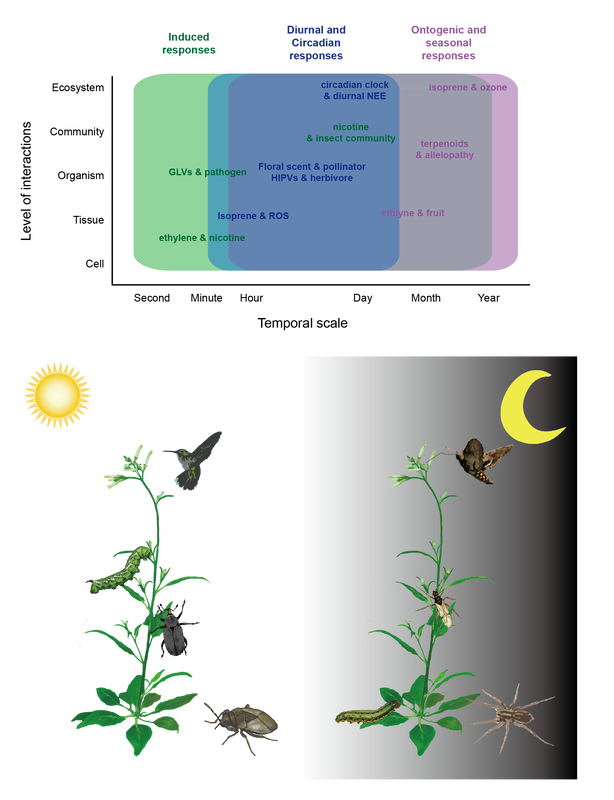Phenotypic plasticity in plant-herbivore interactions
“The properties of the new thing are a combination of the properties of prior known cases and concept”
Medin and Shoben (1988)
Medin and Shoben (1988)
|
Figure 1. Diversityin plant-herbivore interactions
Figure 2. Temporal complexity in plant-herbivore interactions
|
A single organism also faces biotic and abiotic heterogeneity over time and space scales and these heterogeneity often increase phenotypic plasticity of organisms. Therefore, plants require to evolve plastic responses over time and space to survive under the heterogeneous environment. Ecological interactions vary on many spatial and temporal scales because ecological niche can be differentiated in different time and different space. Simplified interactions or laboratory-based phenotypes is not inadequate to test those questions because ecological interactions are often context-dependent. My group addresses questions in various ecological interactions within a plant over time and space. In particular, I focus on the generally tissue-specific plant defense against specialized insect herbivores. (I) What ecological factors allow complex plant-herbivore interactions in a plant? (II) What is the functional consequence of the tissue-specific defense and how plant shapes tissue-specific defense? (III) How plant shape tissue-specific plant-herbivore interactions? (IV) Ultimately, I expect to understand the Darwinian fitness consequence of heterogeneous plant-herbivore interactions in nature. My approach to science in general involves 1) the search for novel tissue-specific interactions (particularly, endophytic herbivores), 2) combining interdisciplinary approaches (generally, recent molecular biology and analytical chemistry tool boxes) to understand novel tissue-specific plant defense responses, and 3) intensive and manipulative field and common garden experiments to test for the functional consequence of tissue-specific plant resistance. The functional consequences and molecular basis of general plant defense responses in plants are relatively well studied, but it is still largely unknown how plant defend the endophytic herbivore and it’s ecological consequence. |



